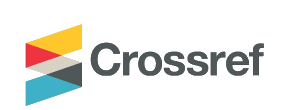The Work Readiness Scale (WRS): Developing a measure to assess work readiness in college graduates
DOI:
https://doi.org/10.21153/jtlge2011vol2no1art552Keywords:
work readiness, graduate employability, graduate recruitment, graduate selection, graduate assessment, transferable skills, graduate competenciesAbstract
Work readiness is a relatively new concept which has emerged in the literature as a selection criterion for predicting graduate potential. Its definition and validity however, is contentious. To address this issue, the current study aimed to identify the attributes and characteristics that comprise work readiness and develop a scale to assess graduate work readiness. A qualitative study was conducted to assist in generating a representative pool of items for quantitative measurement. The resultant 167 item Work Readiness Scale (WRS) which we developed was validated in a sample of 251 graduates across a range of disciplines. Item analysis assisted in refining the scale. Exploratory factor analyses supported a 4-factor solution, with the final WRS consisting of 64 items. The four factors explained 44.7% of the variance, demonstrated excellent reliability and were labelled personal characteristics, organisational acumen, work competence, and social intelligence. The findings indicate that work readiness is a multidimensional construct and initial evidence is provided for the construct validity of the WRS.
Metrics
References
ACNielsen Research Services (2000). Employer satisfaction with graduate skills: Research report, Evaluations and Investigations Programme Higher Education Division. Canberra, ACT: Department of Education, Training and Youth Affairs
Atlay, M., & Harris, R. (2000). An institutional approach to developing students' 'transferable' skills. Innovations in Education and Training International, 37(1), 76-84.
Caballero, C., & Walker, A. (2010). Work readiness in graduate recruitment and selection: A review of current assessment methods. Journal of Teaching and Learning for Graduate Employability, 1(1), 13 - 25.
Carless, S. A. (2007). Graduate recruitment and selection in Australia. International Journal of Selection and Assessment, 15(2), 153-166.
Casner-Lotto, J., & Barrington, L. (2006). Are they really ready to work? Employers' perspectives on the basic knowledge and applied skills of new entrants to the 21st century U.S. workforce. USA: The Conference Board, Inc., the Partnership for 21st Century Skills, Corporate Voices for Working Families, and the Society for Human Resources Management.
Converse, P.D., Peterson, M.H., & Griffith, R.L. (2009). Faking on personality measures: Implications for selection involving multiple predictors. International Journal of Selection and Assessment, 17(1), 47-60.
Cummins, R. A. (2002). Vale ComQol: Caveats to the comprehensive quality of life scale Retrieved 4 August, 2009, from: http://acqol.deakin.edu.au/instruments/ValeComQol.doc.
Dawes, J. (2001). Comparing data gathered using five point vs eleven point scales. Paper presented at the Australia New Zealand Marketing Academy Conference Auckland, New Zealand, 1-5 December 2001.
DeVellis, R.F. (2003). Scale development: Theory and applications. Thousand Oaks, USA: Sage Publications.
Fisher, C. D., & Locke, E. A. (1992). The new look in job satisfaction research and theory. In C. J. Cranny, P. C. Smith, & E. F. Stone (Eds.), Job satisfaction (pp. 165-194). New York: Lexington Books.
Gabb, A. (1997). University challenge. Management Today. ( 1 December 1997), 62-64.
Gardner, P. D., & Liu, W.-Y. (1997). Prepared to perform? Employers rate work force readiness of new grads. Journal of Career Planning & Employment, 57(3), 32-56.
Hager, P., & Holland, S. (2006). Introduction. In P. Hager & S. Holland (Eds.), Graduate attributes, learning and employability. The Netherlands: Springer.
Hair, J. F., Anderson, R. E., Tatham, R. L., & Black, W. C. (1995). Multivariate data analysis (4th ed.). Englewood Cliffs: Prentice Hall.
Hambur, S., Rowe, K., & Luc, L. T. (2002). Graduate skills assessment: Stage one validity study. Report by Australian Council for Educational Research (ACER) for Evaluations and Investigation Programme. Canberra, ACT: Commonwealth Department of Education, Science & Training.
Hart, P. D. (2008). How should colleges assess and improve student learning? Employers' views on the accountability challenge, A survey of employers conducted on behalf of: The Association of American Colleges and Universities. Washington, DC: Peter D. Hart Research Associates, Inc.
Hodgkinson, G. P., & Payne, R. L. (1998). Graduate selection in three European countries. Journal of Occupational and Organizational Psychology, 71(4), 359-365.
Jensen, A. R. (1980). Bias in mental testing. New York: Free Press.
Keenan, T. (1995). Graduate recruitment in Britain: A survey of selection methods used by organizations. Journal of Organizational Behaviour, 16(4), 303-317.
Kenny, D. A. (1979). Correlation and causality. New York: Wiley.
Kenny, D. A., & Kashy, D. A. (1992). Analysis of the multitrait-multimethod matrix by confirmatory factor analysis. Psychological Bulletin, 112(1), 165-172.
Nunnally, J. C., & Bernstein, I. H. (1994). Psychometric Theory (3rd ed.). New York: McGraw-Hill.
Patterson, F. (2001). Developments in work psychology: Emerging issues and future trends. Journal of Occupational and Organizational Psychology, 74(4), 381-390.
Roth, P. L., & Bobko, P. (2000). College grade point average as a personnel selection device: Ethnic group differences and potential adverse impact. Journal of Applied Psychology, 85(3), 399-406.
Rynes, S. L., & Boudreau, J. W. (1986). College recruiting in large organizations: Practice, evaluations, and research implications. Personnel Psychology, 39(4), 729-757.
Salgado, J. F. (1999). Personnel selection methods. In C. L. Cooper & I. T. Robertson (Eds.), International Review of Industrial & Organizational Psychology. New York: Wiley.
Schmid, J., & Leiman, J. N. (1957). The development of hierarchical factor solutions. Psychometrika 22(1), 53-61.
Slaughter, J. E., Stanton, J. M., Mohr, D. C., William, A., & Schoel, I. (2005). The interaction of attraction and selection: Implications for college recruitment and Schneider's ASA model. Applied Psychology: An International Review, 54(4), 419-441.
Steckler, A., Kenneth, R., McLeroy, K.R., Goodman, R. M., Bird, S. T., & McCormick, L. (1992). Toward integrating qualitative and quantitative methods: An introduction. Health Education Quarterly, 19(1), 1-8.
Stewart, J., & Knowles, V. (1999). The changing nature of graduate careers. Career Development International, 4(7), 370-383.
Stewart, J., & Knowles, V. (2000). Graduate recruitment and selection practices in small businesses. Career Development International, 5(1), 21-38.
Tabachnick, B. G., & Fidell, L. S. (2007). Using multivariate statistics (4th ed.). Boston: Allyn and Bacon.
Wolff, H., & Preising, K. (2005). Exploring item and higher order factor structure with the Schmid-Leiman solution: Syntax codes for SPSS and SAS. Behavior Research Methods, 37(1), 48-58.











